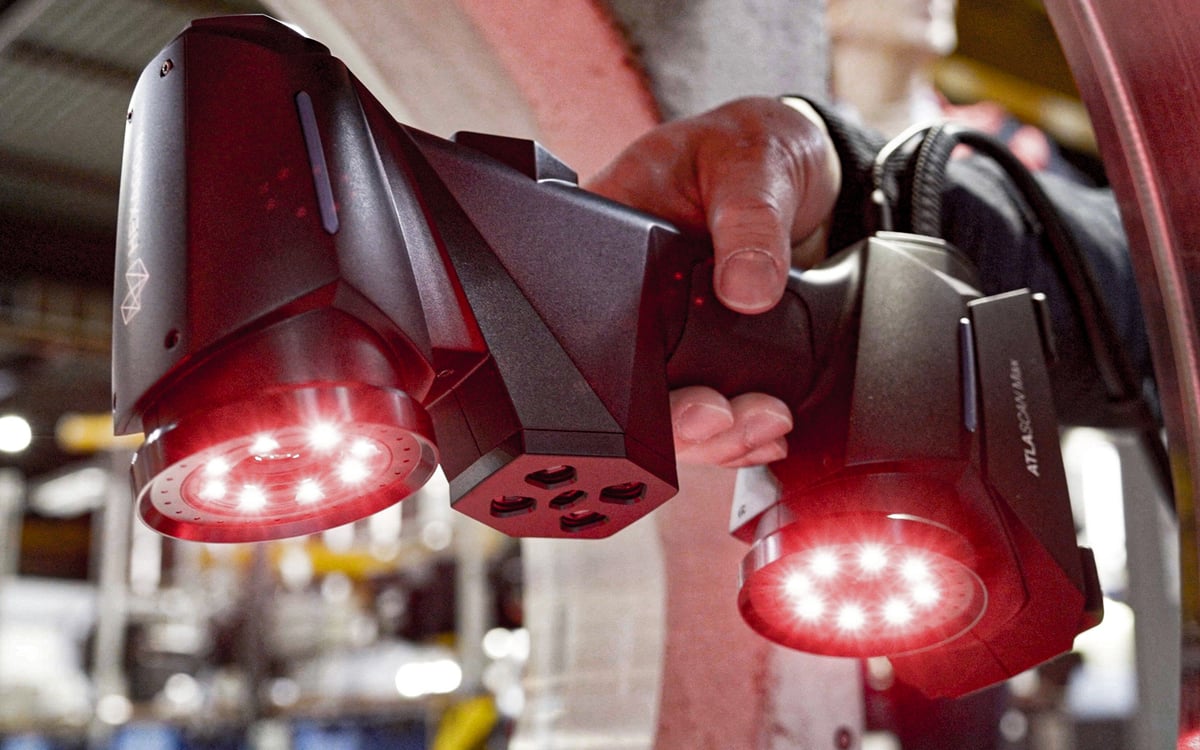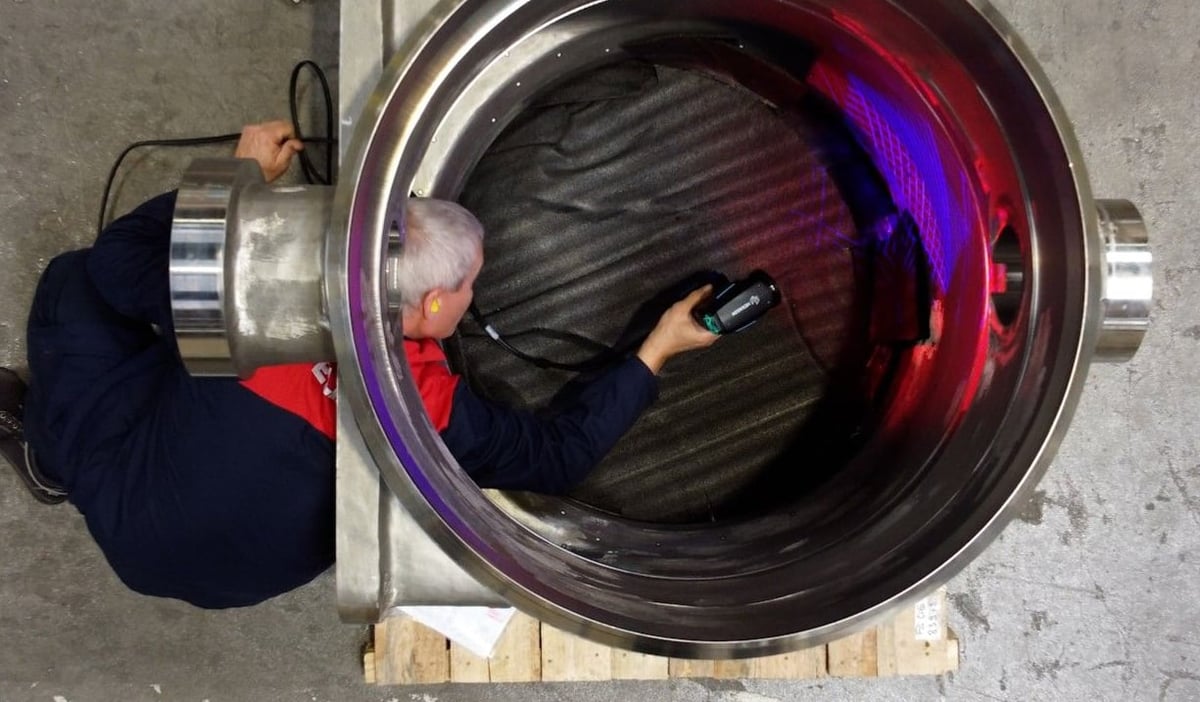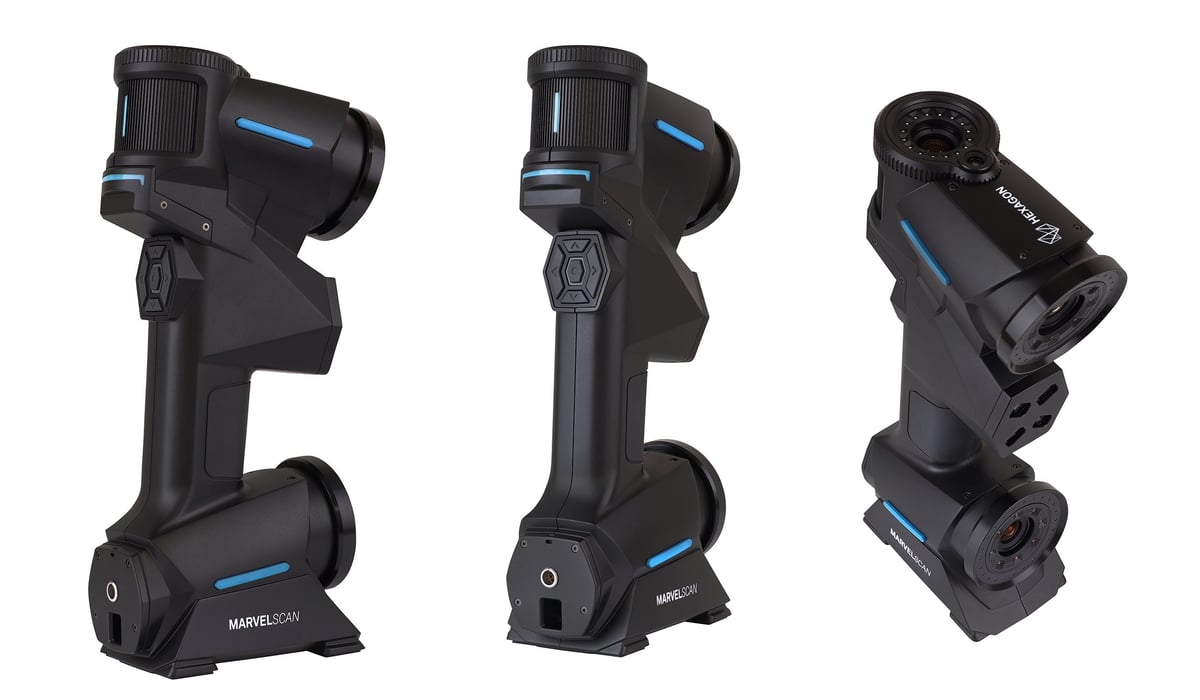Hexagon, the company you may know as the maker of software for generative design, simulation, and photogrammetry, has branched out to now offer handheld scanning hardware.
The new wireless Atlascan Max (1 kg) and Marvelscan (1.3 kg) scanners were created specifically to generate the detailed and highly complex scanning data that complements its manufacturing software, the company says.

Hexagon brings a long history of scanning hardware to the table from its mounted industrial inspection scanners and 3D sensors for both laser trackers and portable measuring arms. With these two new handheld devices, the company is making its optical and metrology technology more accessible to more businesses.
Hexagon says the scanners are in the $50K to $80K range.
There are a lot of handheld scanners on the market today, but what makes the Marvelscan, in particular, a bit unique is that it features three of the most sought after technologies in industrial handheld scanners together in one unit. There’s dynamic scanning, which is the ability to switch easily via a thumb button from scanning modes for close-up to medium-distance scanning; photogrammetry, which is the ability to capture large-scale environments, like buildings; and target-less measurement, which means there’s no need to apply target stickers to the object or establish reference points to ensure accuracy.
“Wireless and ergonomic, these scanners provide a seamless, instant scanning experience from the shop floor to the shipyard,” says Pirmin Bitzi, general manager for portable measuring devices at Hexagon.
When using the scanning modes, the working distance for the Marvelscan is 150 mm to 650 mm while the Atlasan has a slightly narrower working distance of 200 mm to 650 mm.
Both scanners use laser triangulation, as opposed to structured light. The Atlascan Max uses
26 blue laser lines for standard scanning, 1 blue laser line for areas hard to reach, and 14 blue laser lines for fine scanning. Accuracy reaches 0.02 mm. Marvel scan uses 22 blue laser lines for standard scanning, 1 blue laser line for areas hard to reach, and 5 blue laser lines for fine scanning, with the same accuracy.
The company’s “Edge Detection” technology uses gray scale vision and triangulation.

Hexagon anticipated adoption from a range of industries including, automotive, rail, industrial engineering, and general manufacturing, as well as heritage and restoration projects outside of manufacturing.
“Today, manufacturing and engineering teams recognize the value of up-to-date 3D scans throughout the product lifecycle. This means almost anyone might need to perform a metrology-grade scan of a part regardless of their location,” says Bitzi.
Because both scanners are wireless there’s no need to have a laptop on hand to change scanning modes ore access different feature. For example, users can scan open surfaces with Standard mode, then quickly switch to Fine mode with the on-device controls for higher resolution on intricate features. The data collected under both of these modes are automatically combined into a single, workable point cloud.
The new devices also eliminate the common and time-consuming task of measuring multiple holes and slots with a hole-flash capture mode that enables instant data capture of multiple holes and slots in the same shot.

Although designed for handheld use, both scanners can be mounted on industrial robots or cobots for integration within automated inspection.
“Hexagon’s development of handheld scanning technology aims to help manufacturers respond rapidly to shifting demands and capture crucial data more quickly, even in challenging environments,” the company says.
License: The text of "Hexagon Debuts Feature-Packed, Handheld Industrial 3D Scanners" by All3DP Pro is licensed under a Creative Commons Attribution 4.0 International License.

